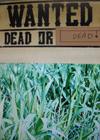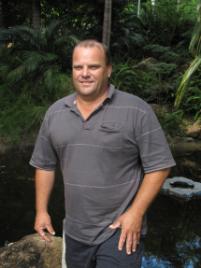Fight against weed menace has Mick Law on its side!
Published on 11 March, 2010
If plants had mug-shots, hymenachne would feature on wanted posters throughout the nation. It could be considered as the cane toad of the plant world.
Since its escape from ponded pastures used for cattle fodder, the semi-aquatic grass has gained official status as a 'worst weed' and as a 'Weed of National Significance' due to its habit of clogging waterways.

Now CQUniversity Masters researcher Mick Law has joined the frontline in the battle against hymenachne. He's keen to examine the plant's morphology to trace how quickly it can spread.
"It can spread via seeds but also if a piece of the plant gets into a waterway. If a farmer spots a small patch it would be handy to know how much time there is to treat the weed before it gets out of control," he said.
Hymenachne clogs waterways, often causing flooding and threatening drinking water. Fish habitat and nursery areas are also at risk and the weed infests and blocks drainage and irrigation channels.
Mick has recently been in the spotlight thanks to winning one of 4 competitive scholarships funded by the National Program for Sustainable Irrigation (NPSI).
The scholarship enabled him to spend his recent summer period contributing to CQUniversity's research into oxygation, which involves adding air to sub-surface irrigation systems to improve aeration in the soil structure serving the root zone of crops.
The summer research focused on two crops that have not previously adopted oxygation on any scale - pineapples and figs - and looked at outcomes with contrasting soil types.


